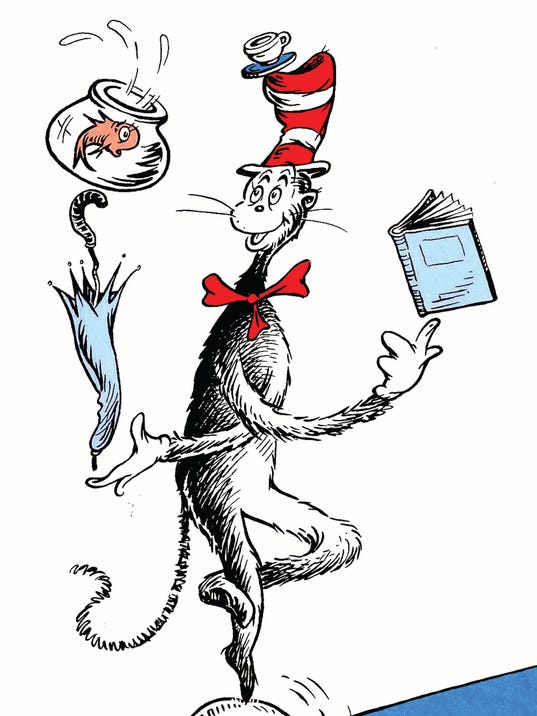
From The Atlantic:
Reading Racism in Dr. SeussA children’s-literature scholar argues it’s time to acknowledge the perturbing themes in some of the most beloved books.
ISABEL FATTAL 7:00 AM ET EDUCATION
… But Philip Nel, a scholar and professor of children’s literature whose specialties include Dr. Seuss and Harry Potter, is pushing readers to grapple with the political and social implications of the stories that inspire such warm, fuzzy memories. In his new book, Was the Cat in the Hat Black?: The Hidden Racism of Children’s Literature, and the Need for Diverse Books, Nel argues that, yes, the Cat in the Hat was black—or, more precisely, that Seuss’s depiction of the character was based on racial stereotypes and inspired by traditions of blackface minstrel entertainment—and—and that dozens more children’s books of decades past are brimming with insidious, racist themes. …
 The Cat in the Hat seems more of a hepcat than a minstrel.
The Cat in the Hat seems more of a hepcat than a minstrel.
Fattal: You argue that there is an imperative to keep reading these problematic children’s books. What would you say to those who ask why we wouldn’t just stop reading them?Theodore Geisel, a.k.a., Dr. Seuss, was a leftist Lutheran who drew countless liberal political and allegorical cartoons. But he was still a German, and you know what they are like. It’s in their blood.Nel: There is actually a very strong case for not reading them. Racist books inflict real damage on children of all races. So there’s a very strong argument to be made for that, and I don’t want to diminish that at all. The reason that I am not making that argument is that I don’t think that ignoring the symptom cures the disease. People need to learn that this is one place that racism comes from.
Then again, knocking down—in the name of fighting racism—the upside down Geisel Library at UC San Diego would certainly improve the look of the campus, so knock yourself out!












